By Wayne Gillam | UW ECE News
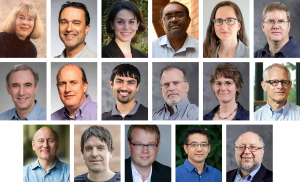
What causes a research publication to become highly cited and stand the test of time? We asked these UW ECE faculty members — who have all written research publications that are frequently cited — to help shed some light on this intriguing question.
It’s widely known that the University of Washington Department of Electrical & Computer Engineering is located in Seattle, a major technology hub and home to companies such as Amazon, Microsoft and Boeing. This proximity to leading technology companies makes the research and learning environment at UW ECE exceptionally rich, collaborative and innovative. But what might be less known is that many faculty members in the Department are leading their respective fields both nationally and internationally.
Many UW ECE faculty have had a major impact on electrical and computer engineering research over the years. These faculty members tend to be prolific authors of papers, books and other publications that are highly cited by researchers worldwide. A 2014 study showed that only 0.026% of research papers have over 1,000 citations, and according to Google Scholar, 17 UW ECE faculty members have had at least one publication, and sometimes many more, with over 1,000 citations.
“Because many of our faculty are leading and at the cutting edge of their respective fields, their work often is heavily cited by their peers and those following in their footsteps,” said UW ECE Professor and Chair Eric Klavins. “I don’t think there is a magic formula for guaranteeing a research publication will become highly cited. But if there is one, our faculty seem to have cracked that code.”
What sorts of variables lead to a research paper, book or article becoming highly cited? This is a question often asked by students, faculty and researchers. But it’s one that doesn’t appear to have a clear-cut answer. There are many factors that contribute to a research paper becoming well-known and frequently cited — for example, the impact of the research in academia and industry, the profile of the author, the topic the paper is addressing and the prominence of the journal or publication the paper is published in. However, even though it’s unlikely this question can ever be fully answered, useful insights can still be gained by asking faculty directly why specific work of theirs has been cited so frequently.
To that end, the following is a listing of UW ECE faculty members who have authored frequently cited publications along with a link to one of their well-known papers, books or articles. Each work listed has over 1,000 citations, according to Google Scholar on October 15, 2021. Faculty were asked why they thought this particular paper or publication was so often cited, and their responses are below.
As one might expect, there was no single, definitive answer to the question, “What caused your research publication to be highly cited?” However, examining feedback from UW ECE faculty revealed several common and general themes. Among the faculty surveyed, these three factors appeared to most often contribute to a research publication being highly cited:
- Demonstrating first-of-its-kind and/or novel research results
- Providing comprehensive guidance to a field or sector of a field with focus on real-world applications
- Helping to lay groundwork for new or emerging theory and fields within engineering
Read on for specific answers from each UW ECE faculty member addressing what they think made their publication highly cited. The statements below are summaries of feedback received
Linda Shapiro
 Role at UW ECE: Professor
Role at UW ECE: Professor
Research focus: Data Science, Biosystems
Publication: Book, Computer and robot vision, Addison-Wesley Longman, 1991
Number of citations: 6,791
Why was this book so highly cited?
This two-volume set became the authoritative reference for a comprehensive introduction to computer vision. It provided a comprehensive background on theory and algorithms while also linking to real-world applications.
Jeffrey Bilmes
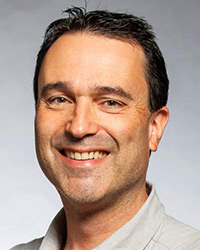 Role at UW ECE: Professor
Role at UW ECE: Professor
Research focus: Machine learning, AI, Biosystems, Data Science
Publication: “A gentle tutorial of the EM algorithm and its application to parameter estimation for Gaussian mixture and hidden Markov models,” ICSI Journal, 1998
Number of citations: 3,559
Why was this paper so highly cited?
The Expectation-Maximization (EM) algorithm is needed in very important machine learning scenarios where there are variables that interact with those in the dataset but were hidden or not observed. It is an effective and general approach, yet it was not widely understood before this paper. This was the first paper to fully develop the EM algorithm for maximum-likelihood estimation in a way that made it easy to understand by a broad sector of the machine learning community.
Maryam Fazel
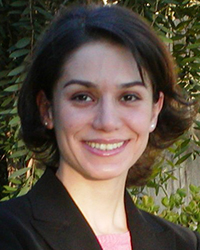
Role at UW ECE: Moorthy Family Professor, Associate Chair for Research
Research focus: Data Science, Robotics and Controls
Publication: “Guaranteed minimum-rank solutions of linear matrix equations via nuclear norm minimization,” SIAM Review, 2010
Number of citations: 3,502
Why was this paper so highly cited?
This paper was the first to show how to estimate low-rank matrices perfectly from highly incomplete information. This surprising result ushered in the new research field of matrix completion and sensing, which found many applications, including in recommender systems, dynamical system identification and phase retrieval in imaging.
Sumit Roy
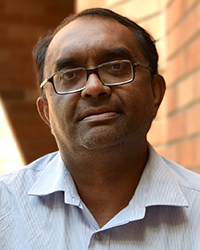 Role at UW ECE: Professor
Role at UW ECE: Professor
Research focus: Computing and Networking
Publication: “Data mules: Modeling and analysis of a three-tier architecture for sparse sensor networks,” Ad Hoc Networks, 2003
Number of citations: 2,617
Why was this paper so highly cited?
This was the first analytical model for the impact of mobile ubiquitous local area network extensions, or MULES, collecting data in what was then the very new and emerging field of sensor networking. MULES can pick up data from sensors when in close range, buffer it and pass data off to wired access points. Because of the close range, this approach allowed for large power savings at the sensors and therefore became an important part of modern sensor networking.
Linda Bushnell
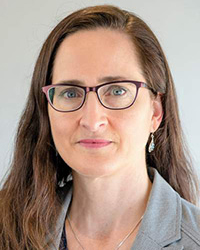 Role at UW ECE: Research Professor
Role at UW ECE: Research Professor
Research focus: Robotics and Controls
Publication: “Stability analysis of networked control systems,” IEEE Transactions on Control Systems Technology, 2002
Number of citations: 2,481
Why was this paper so highly cited?
The significance of this work is in the combining of communication constraints and control specifications, which had not been previously addressed, for the scheduling of real-time network traffic, such as those used in the controller area network (CAN) protocol in modern automobiles. This paper helped to pave the way for a significant body of work as demonstrated by the hundreds of papers, books and conference tracks that reference it.
Scott Hauck
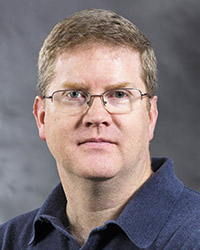 Role at UW ECE: Professor
Role at UW ECE: Professor
Research focus: VLSI and Digital Systems
Publication: “Reconfigurable computing: a survey of systems and software,” ACM Computing Surveys, 2002
Number of citations: 2,271
Why was this paper so highly cited?
In the mid 1990’s field-programmable gate array (FPGA)-based computation was in its infancy, with much promise and many approaches. Since then, it has become a major force in high-performance computing. This paper served as the introduction to this field for researchers, guiding many to this evolving field.
Daniel Kirschen
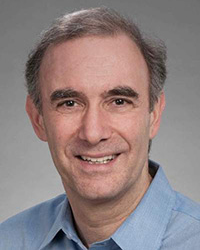 Role at UW ECE: Donald W. and Ruth Mary Close Professor
Role at UW ECE: Donald W. and Ruth Mary Close Professor
Research focus: Power and Energy Systems
Publication: Book, Fundamentals of Power System Economics, John Wiley & Sons, 2004
Number of citations: 2,024
Why was this book so highly cited?
This book became widely used because it looked at an important problem from two different perspectives: It rigorously explained the economics of electricity markets for electrical engineers, while also explaining the underlying engineering to economists. The second edition was published in 2018.
Joshua Smith
 Role at UW ECE: Milton and Delia Zeutschel Professor in Entrepreneurial Excellence, PMP Coordinator
Role at UW ECE: Milton and Delia Zeutschel Professor in Entrepreneurial Excellence, PMP Coordinator
Research focus: Biosystems, Photonics and Nano Devices, Power and Energy Systems
Publication: “Analysis, experimental results, and range adaptation of magnetically coupled resonators for wireless power transfer,” IEEE Transactions on Industrial Electronics, 2010
Number of citations: 1,873
Why was this paper so highly cited?
This paper provides a new visualization of the state space of high Q-coupled resonator wireless power transfer systems. The visualization immediately suggests a simple control scheme that can keep the transferred power level constant despite disturbances. The paper showed experimentally that the control scheme actually worked — with the counter-intuitive net result of wireless power transfer that doesn’t drop off with distance.
Shwetak Patel
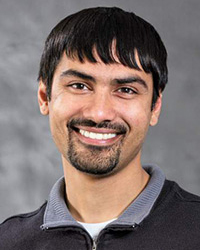 Role at UW ECE: Washington Research Foundation Endowed Professor
Role at UW ECE: Washington Research Foundation Endowed Professor
Research focus: Biosystems, Data Science, Computing and Networking
Publication: “Experimental security analysis of a modern automobile,” 2010 IEEE Symposium on Security and Privacy
Number of citations: 1,863
Why was this paper so highly cited?
This paper was the first to show an actual over-the-air attack of the embedded systems infrastructure in a modern automobile. The paper received a 2020 IEEE Test of Time award in addition to a number of other honors. The paper is highly cited because it contributed in large part to launching the auto security field. The U.S. Department of Transportation has adopted several guidelines from the paper, and this work is now integral in the automobile industry.
Les Atlas
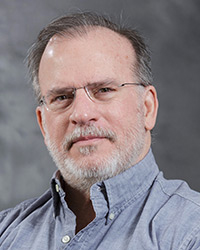 Role at UW ECE: Professor
Role at UW ECE: Professor
Research focus: Biosystems, Data Science
Publication: “Improving generalization with active learning,” Machine Learning, 1994
Number of citations: 1,843
Why was this paper so highly cited?
This paper was the start of a now-common approach, called active learning, within the field of machine learning. It combined a novel idea of how babies learn speech with the theory of machine learning, including neural nets. Active learning was shown to allow more efficient use of labeled training data. Because most machine learning problems have limited amounts of labeled training data, this approach offered a potentially more efficient and lower cost training approach, inspiring many subsequent papers.
Mari Ostendorf
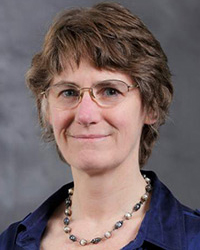 Role at UW ECE: System Design Methodologies Professor
Role at UW ECE: System Design Methodologies Professor
Research focus: Data Science
Publication: “ToBI: A standard for labeling English prosody,” Proceedings of the 2nd International Conference on Spoken Language Processing, 1992
Number of citations: 1,786
Why was this paper so highly cited?
Prosody is the patterns of stress and intonation in a language. It is accepted to be central to our understanding of language. While much of language can be transcribed into words and represented as text, usual text transcriptions do not transcribe prosody. This paper offered an approach to transcribe prosody, which became a standard, greatly benefiting the field of natural language processing.
Blake Hannaford
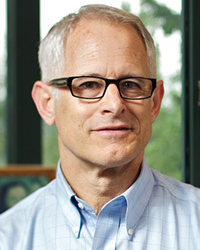 Role at UW ECE: Professor
Role at UW ECE: Professor
Research focus: Robotics and Controls, Biosystems
Publication: “Measurement and modeling of McKibben pneumatic artificial muscles,” IEEE Transactions on Robotics and Automation, 1996
Number of citations: 1,741
Why was this paper so highly cited?
A goal of robotics is to make mechanical actuators behave in a manner similar to human skeletal muscle. This paper recognized that while pioneers in artificial muscle research had inspired many and took advantage of artificial muscles’ compatibility with the human body, there was little or no engineering theory of how artificial muscles worked, and no formal comparison with human muscle. This paper provided the necessary new theory and experimental verification to lay the groundwork used by many researchers in both rehabilitation robotics and soft robotics, which have exploded in use in recent years.
Henrique (Rico) Malvar
 Role at UW ECE: Affiliate Professor
Role at UW ECE: Affiliate Professor
Research focus: Data compression, signal processing, image compression, audio compression, multimedia signal enhancement, multimedia protection and forensics, human-computing interfaces, hardware devices and accessibility
Publication: Book, Signal processing with lapped transforms, Artech, 1992
Number of citations: 1,458
Why was this book so highly cited?
This book describes the basic theory and applications of lapped transforms in signal processing. These transforms are now commonly used in audio and image compression and enhancement, geophysics, digital communications, and other applications.
Georg Seelig
 Role at UW ECE: Professor
Role at UW ECE: Professor
Research focus: Biosystems
Publication: “Enzyme-free nucleic acid logic circuits,” Science, 2006
Number of citations: 1,384
Why was this paper so highly cited?
In DNA computing, scientists and engineers try to identify a minimal set of rationally designed molecular building blocks that enable them to reconstruct the kind of molecular computation performed by cells and living organisms. The goal of this work was not to understand biology but to develop reliable engineering paradigms for molecular systems that were also transparent because they were man-made, rather than having evolved over millions of years. This paper introduced such a systematic approach based on DNA strand displacement. The approach has since been used widely and effectively, and it provides the foundation for today’s dynamic DNA nanotechnology.
Michael Taylor
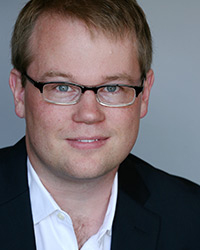 Role at UW ECE: Associate Professor
Role at UW ECE: Associate Professor
Research focus: Computing and Networking
Publication: “The raw microprocessor: A computational fabric for software circuits and general-purpose programs,” IEEE Micro, 2002
Number of citations: 1,311
Why was this paper so highly cited?
This paper presented the first physically scalable multicore microprocessor design and implementation, foreshadowing how many multicores are designed today. The challenge faced by very large-scale integration (VLSI) designers was: How can chip designers leverage growing quantities of chip resources even as wire delays become substantial? This paper provided the influential architecture that achieved the maximum amount of performance and energy efficiency in the face of wire delay.
Mo Li
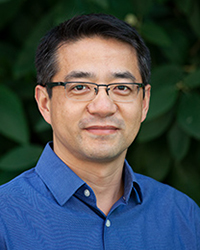 Role at UW ECE: Professor, Graduate Program Coordinator
Role at UW ECE: Professor, Graduate Program Coordinator
Research focus: Photonics and Nano Devices
Publication: “Ultra-sensitive NEMS-based cantilevers for sensing, scanned probe and very high-frequency applications,” Nature Nanotechnology, 2007
Number of citations: 1,189
Why was this paper so highly cited?
Nanoscale mechanical sensors (dubbed NEMS) offer a greatly enhanced sensitivity that is unattainable with past microscale devices. This paper reported the first very-high-frequency, self-sensing nanocantilevers for chemical gas sensing and analysis in ambient conditions. By measuring its vibration frequency change, the nanocantilever can detect the mass of 30,000 water molecules (or 1 attogram (10-18 g).
Howard Chizeck
 Role at UW ECE: Professor Emeritus
Role at UW ECE: Professor Emeritus
Research focus: Robotics and Controls, Biosystems
Publication: “Controllability, stabilizability, and continuous-time Markovian jump linear quadratic control,” IEEE Transactions on Automatic Control, 1990
Number of citations: 1,108
Why was this paper so highly cited?
This paper establishes necessary and sufficient conditions for optimal steady state quadratic control of continuous-time linear systems that possess randomly jumping parameters, which can be described by finite-state Markov processes. This seminal paper established a direction of theoretical development and has been applied to a wide variety of practical problems, including wireless communication and traffic control.

